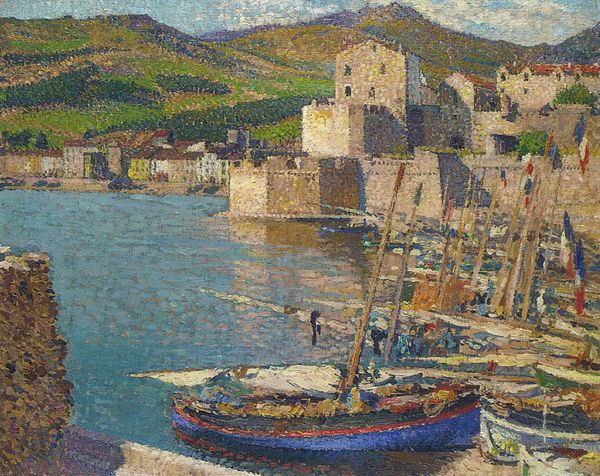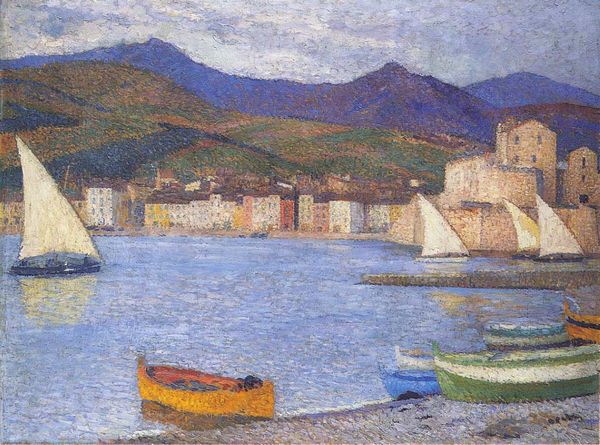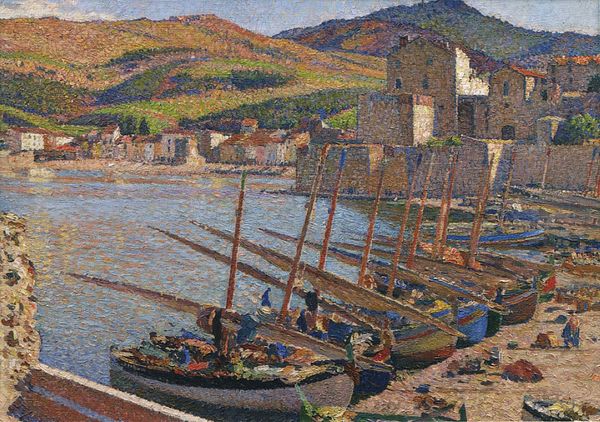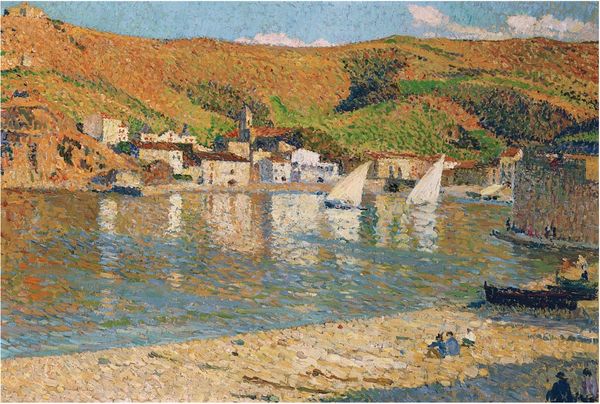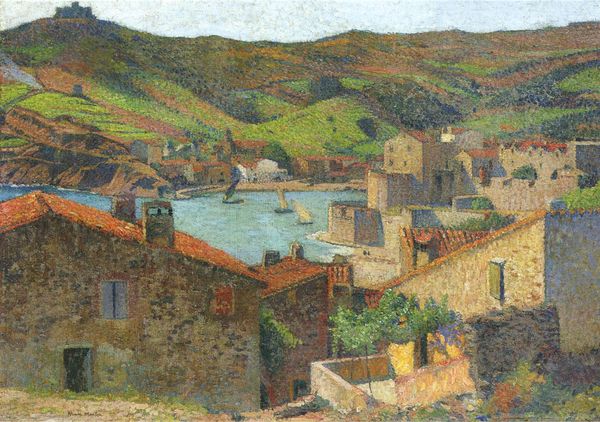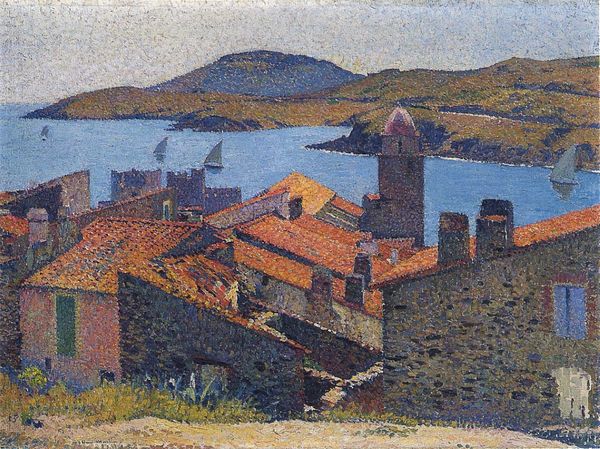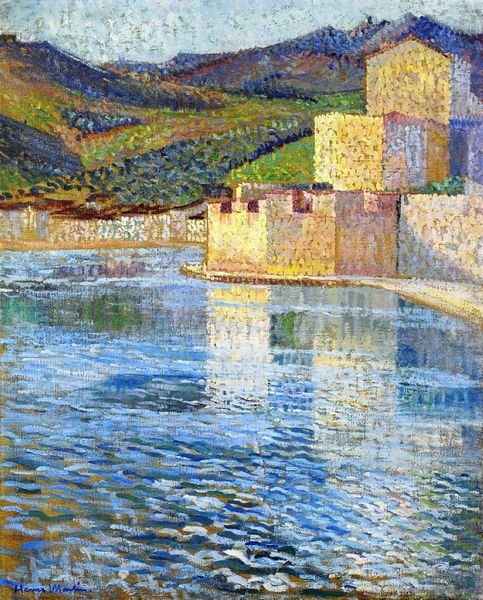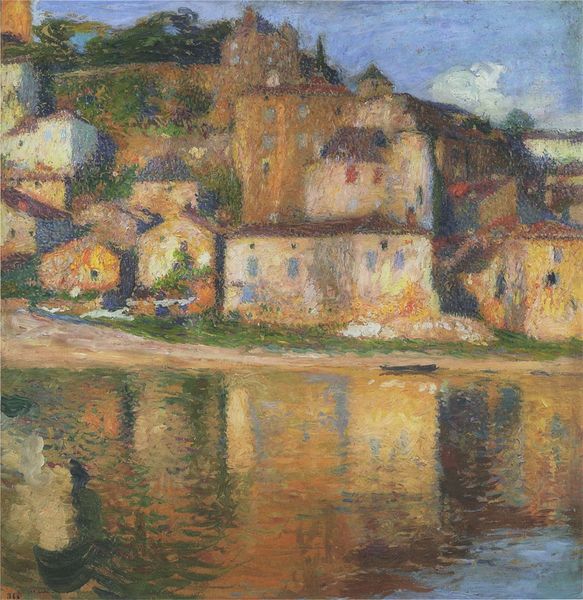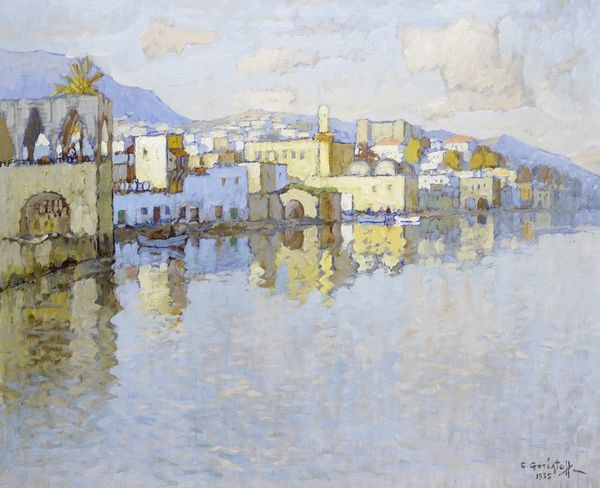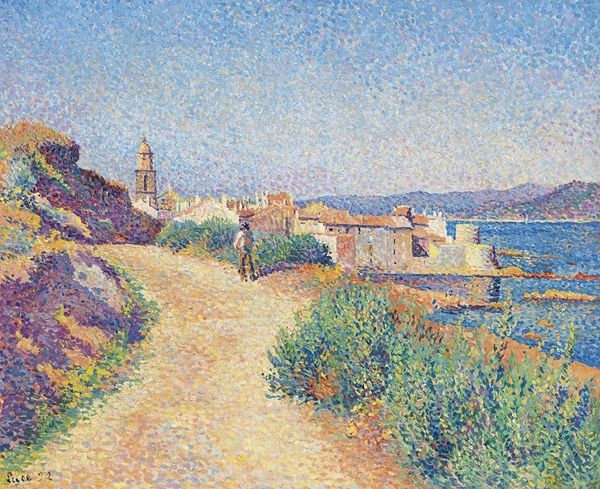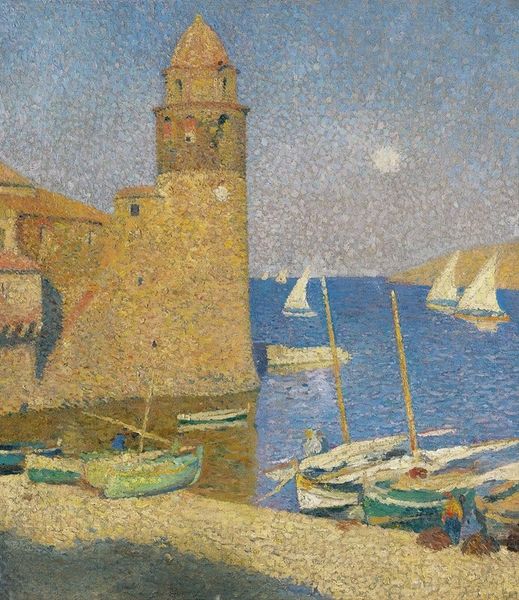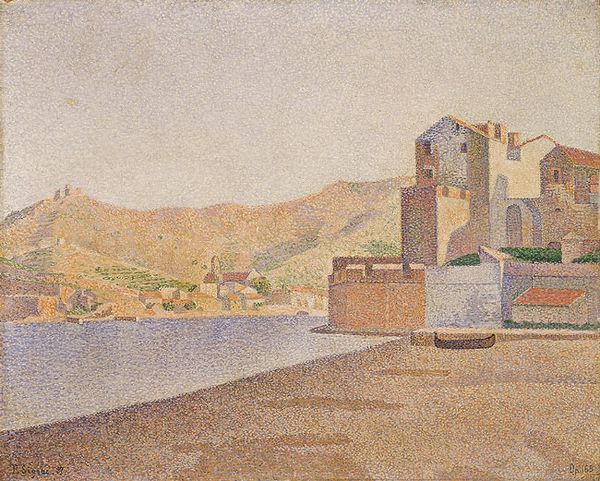
Copyright: Public domain
Editor: Henri Martin’s “Blue Boat in Port Collioure,” from 1902. The entire scene is built up from dabs of color… pointillist almost, but looser. It feels…dreamy. What catches your eye? Curator: Well, beyond the shimmering surface and idyllic scene, I’m interested in what Port Collioure represented historically. By 1902, the South of France, especially coastal towns like Collioure, were being heavily marketed as artist retreats. How does this idyllic depiction contribute to the burgeoning tourism industry of the time, and what role did Martin play in shaping that image? Editor: So, was this “art for tourism,” so to speak? Curator: Partly, but it’s more complex than that. Artists were actively participating in crafting the identity of these places, which, in turn, attracted visitors and influenced the art market. Notice how the houses almost become geometric blocks, simplifying the forms. Could that be a reflection of the growing industrialization contrasting with the natural beauty he’s portraying? Editor: Interesting thought. It’s almost as if he’s trying to find a balance between tradition and modernity. Do you think plein-air painting, like this, was also a statement of sorts, pushing against the more formal academic styles? Curator: Precisely! The choice to paint *en plein air*, to capture the immediate sensation of light and color, becomes a political act – a rejection of the established art institutions and a celebration of direct experience and individualism. This, coupled with his depiction of a seemingly timeless scene, solidifies its commercial appeal while also participating in a broader artistic dialogue about the nature of seeing and representing the world. Editor: That really gives me a different perspective on the painting; it is so much more than a pretty picture. I guess landscapes are never *just* landscapes. Curator: Exactly. Thinking about the social and cultural context helps us understand the complex layers of meaning embedded within even the most seemingly straightforward scenes.
Comments
No comments
Be the first to comment and join the conversation on the ultimate creative platform.
